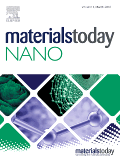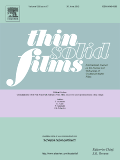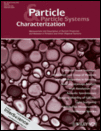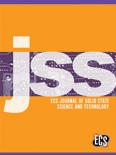
Materials Today Nano
Scope & Guideline
Empowering Knowledge in Nano-Materials for Global Impact
Introduction
Aims and Scopes
- Nanomaterial Synthesis and Characterization:
The journal publishes studies on various synthesis techniques for nanomaterials, including chemical vapor deposition, sol-gel methods, and electrospinning, alongside advanced characterization techniques such as electron microscopy and spectroscopy. - Energy Storage and Conversion:
Research on nanomaterials for energy applications, including batteries, supercapacitors, and fuel cells, is a core focus area, exploring ways to enhance performance and efficiency through nanostructuring. - Biomedical Applications:
The journal features studies on the application of nanomaterials in medicine, including drug delivery systems, imaging agents, and therapeutic agents, highlighting their potential to revolutionize healthcare. - Environmental Applications:
Research on the use of nanomaterials for environmental remediation and pollution control, such as photocatalysis and water treatment, is increasingly prominent. - Nanoelectronics and Quantum Devices:
The journal explores the development of nanoscale electronic devices, including memristors and transistors, emphasizing their role in next-generation computing and sensing technologies. - Sustainable Materials and Green Chemistry:
A growing area of interest is the synthesis of nanomaterials via green chemistry approaches, focusing on sustainability and the reduction of environmental impact.
Trending and Emerging
- Artificial Intelligence and Machine Learning in Materials Science:
The integration of AI and machine learning techniques for materials discovery, optimization, and characterization is gaining traction, offering new avenues for rapid advancement in material properties and applications. - Two-Dimensional Materials and Heterostructures:
Research on 2D materials, such as graphene and transition metal dichalcogenides, along with their heterostructures, is rapidly expanding, focusing on their unique electronic, optical, and mechanical properties for advanced applications. - Nanomaterials for Renewable Energy Solutions:
There is a notable increase in studies focusing on nanomaterials for renewable energy applications, particularly in solar energy conversion and hydrogen production, aligning with global sustainability goals. - Smart Materials and Responsive Systems:
Emerging interest in smart materials that can respond to environmental stimuli (temperature, pH, light) is becoming prevalent, particularly in biomedical applications and soft robotics. - Nanotechnology in Drug Delivery and Cancer Therapy:
The application of nanotechnology in targeted drug delivery systems, particularly for cancer therapy, is a significant trend, focusing on enhancing the efficacy and reducing the side effects of treatments.
Declining or Waning
- Traditional Bulk Materials Science:
There appears to be a waning focus on traditional bulk materials research, with a shift towards nanostructured materials and hybrid systems that integrate multiple functionalities. - Classical Mechanical Properties Studies:
Research focusing solely on classical mechanical properties of materials without incorporating nanoscale phenomena is becoming less prominent, as the field moves towards understanding how nanoscale structures influence macroscopic behaviors. - Inorganic Nanomaterials without Functionalization:
The study of inorganic nanomaterials without innovative functionalization or application is declining, as the emphasis shifts to the multifunctionalization of materials to meet specific application needs.
Similar Journals

Thin Solid Films
Charting New Territories in Materials ResearchThin Solid Films, published by ELSEVIER SCIENCE SA, is a highly regarded journal in the fields of materials science and physics, specifically focused on the properties and applications of thin films. Established in 1967, this journal has been a leading platform for disseminating research on surfaces, coatings, and advanced materials. With its consistent publication through the notable HIndex of scholarly impact, this journal showcases a diverse range of studies ranging from electronic, optical, and magnetic materials to novel surface and interface engineering. In recent evaluations, Thin Solid Films has achieved significant rankings, including a Q2 position in Materials Chemistry and Metals and Alloys, reflecting its relevance and importance in ongoing scientific discourse. Although it does not offer open access, it provides a vital resource for researchers, professionals, and students seeking to advance their knowledge and expertise in thin film technology. The journal's commitment to quality and innovation makes it an essential publication for anyone engaged in the field.

Journal of Nano Research
Exploring Innovations in Nano ResearchThe Journal of Nano Research, published by Trans Tech Publications Ltd, is a distinguished academic journal dedicated to the rapidly evolving field of nanotechnology and materials science. With an ISSN of 1662-5250 and an E-ISSN of 1661-9897, the journal has been an important platform for researchers and professionals since its inception in 2008, continuing to provide high-quality peer-reviewed research through to 2024. Nestled in Switzerland, the Journal of Nano Research plays a pivotal role in disseminating cutting-edge findings, as recognized by its categorization in Q3 for Materials Science and Physics while being positioned in Q4 for Nanoscience and Nanotechnology as of 2023. With Scopus rankings highlighting its impact, including Rank #129 in general Physics and Astronomy and Rank #300 in Materials Science, this journal is crucial for academics seeking to stay ahead in research trends and innovations in nano-related disciplines. Although it operates under a subscription model, the journal's objectives include fostering collaboration and knowledge-sharing among researchers, making it an invaluable resource for anyone immersed in the world of nanotechnology.

PARTICLE & PARTICLE SYSTEMS CHARACTERIZATION
Exploring the Frontiers of Particle SciencePARTICLE & PARTICLE SYSTEMS CHARACTERIZATION is a distinguished journal dedicated to advancing the knowledge within the fields of Chemistry, Condensed Matter Physics, and Materials Science. Published by WILEY-V C H VERLAG GMBH in Germany, this journal has established a solid reputation since its inception in 1984, showcasing research aimed at understanding the intricate properties and behaviors of particulate systems. With an impressive Q2 ranking in its respective categories and Scopus ranks indicating a robust standing in the global research community, it serves as an essential resource for researchers, professionals, and students. Although it does not currently offer Open Access options, its comprehensive articles and reviews provide valuable insights that contribute significantly to the ongoing discourse in these scientific domains. As it prepares to celebrate four decades of publication, PARTICLE & PARTICLE SYSTEMS CHARACTERIZATION continues to provide a vital platform for emerging knowledge, fostering innovation and collaboration among scientists dedicated to the study of particle systems.

Journal of Nanostructures
Shaping the Future with Nanostructured InsightsJournal of Nanostructures, published by UNIV KASHAN PRESS, is an esteemed open-access journal that has been actively disseminating groundbreaking research since 2011. With an ISSN of 2251-7871 and an E-ISSN of 2251-788X, this journal has established itself as a significant platform for the exploration of nanostructured materials across various disciplines, including biomaterials, electronic, optical, and magnetic materials. As a testament to its scholarly impact, the journal has achieved notable rankings in its respective categories, including Q3 status in prominent areas such as Mechanics of Materials and Polymers and Plastics. This makes the Journal of Nanostructures a vital resource for researchers and professionals seeking to advance their understanding and innovation in nanotechnology. Furthermore, the journal's commitment to open accessibility ensures that valuable knowledge reaches a diverse audience, facilitating collaboration and growth in this dynamic field. For researchers eager to contribute, the journal offers a platform to publish impactful findings that can influence both academia and industry.

JOURNAL OF CLUSTER SCIENCE
Exploring the Frontiers of Cluster ScienceJOURNAL OF CLUSTER SCIENCE, published by SPRINGER/PLENUM PUBLISHERS, is a prominent and influential journal in the fields of Biochemistry, Chemistry, Condensed Matter Physics, and Materials Science. With an ISSN of 1040-7278 and E-ISSN of 1572-8862, this journal has been contributing to scientific discourse since its inception in 1990 and continues to publish cutting-edge research through 2024. It holds a respectable position in the academic landscape with its category quartiles indicating a Q3 ranking in Biochemistry and Q2 rankings in Chemistry, Condensed Matter Physics, and Materials Science as of 2023. The journal's noteworthy Scopus rankings further underscore its relevance, particularly a rank of #82 in Condensed Matter Physics, showcasing its impact and the quality of research disseminated. Although it does not currently offer open access options, it remains a key resource for researchers, professionals, and students who are invested in understanding the complexities of cluster science and its interdisciplinary applications.

FULLERENES NANOTUBES AND CARBON NANOSTRUCTURES
Unveiling the Potential of Fullerene and Nanotube ResearchFULLERENES NANOTUBES AND CARBON NANOSTRUCTURES, published by Taylor & Francis Inc, stands at the forefront of research in the fields of nanotechnology, materials science, and organic chemistry. With an ISSN of 1536-383X and an E-ISSN of 1536-4046, this journal offers a critical platform for disseminating significant findings related to carbon-based nanostructures, materials characterization, and their innovative applications. Recognized for its scholarly impact, the journal enjoys a Q2 ranking in several fields, including Atomic and Molecular Physics, Materials Science, and Organic Chemistry, reflecting its commitment to quality research. Since its inception in 2002, it has maintained a rigorous publication standard and provides open access options, enabling a diverse audience, from researchers to industry professionals, to engage with the latest advancements. The journal's comprehensive scope across converged years until 2024 emphasizes its pivotal role in fostering knowledge in the rapidly evolving realm of nanoscience and nanotechnology. Researchers and practitioners alike are encouraged to explore the cutting-edge research showcased in this vital resource.

JOURNAL OF MATERIALS SCIENCE-MATERIALS IN ELECTRONICS
Advancing the Frontiers of Materials in ElectronicsJOURNAL OF MATERIALS SCIENCE-MATERIALS IN ELECTRONICS, published by Springer, is a distinguished international journal that serves as a vital platform for the dissemination of cutting-edge research in the field of materials science, with a keen focus on electronics. Since its inception in 1990, this journal has consistently contributed to the advancement of knowledge across a range of interdisciplinary categories, including Atomic and Molecular Physics, Optical and Magnetic Materials, and Biomedical Engineering, achieving notable quartile positions in various 2023 Scopus rankings. With an impact factor that signifies its scholarly influence, this journal provides a rigorous peer-reviewed environment for researchers and practitioners to share innovative ideas, experimental findings, and theoretical developments. Although it does not currently offer open access options, the depth and breadth of topics covered—including condensed matter physics and bioengineering—make it an essential resource for those at the forefront of materials research. With a commitment to bridging the gap between theory and practical application, the JOURNAL OF MATERIALS SCIENCE-MATERIALS IN ELECTRONICS continues to pave the way for future explorations in the ever-evolving landscape of materials science.

Nanofabrication
Connecting Researchers to the World of NanofabricationNanofabrication is a leading open-access journal dedicated to advancing the field of nanotechnology through innovative research and comprehensive reviews. Published by the Eurasia Academy Publishing Group (EAPG) since 2014, this journal aims to provide a platform for academic discourse, promoting the latest insights and findings in nanofabrication techniques and applications across diverse domains, including materials science, electronics, and drug delivery systems. With a commitment to accessibility, Nanofabrication ensures that all content is freely available to researchers, professionals, and students worldwide, thereby fostering collaboration and knowledge sharing in the rapidly evolving landscape of nanotechnology. The journal's emphasis on high-quality, peer-reviewed research positions it as an authoritative source for those looking to stay at the forefront of developments in the field.

Nanoscale Research Letters
Innovating at the nanoscale for a brighter tomorrow.Nanoscale Research Letters, published by SPRINGER, is a leading open-access journal dedicated to the rapid dissemination of innovative research in the field of nanoscience and nanotechnology. Established in 2006, this journal provides researchers and professionals with a platform to share their groundbreaking findings across a broad spectrum of applications, including condensed matter physics and materials science. With an impressive Q1 ranking in both Condensed Matter Physics and Materials Science categories as of 2023, it asserts its position as a top-tier publication within the scientific community, bolstered by a 96th percentile rank in the Scopus database. Nanoscale Research Letters not only emphasizes the importance of nanotechnology research but also ensures that its findings are widely accessible, adhering to its open-access mandate. Scholars and students alike are encouraged to contribute to and engage with this dynamic resource, fostering collaboration and innovation in the ever-evolving world of nanoscience.

ECS Journal of Solid State Science and Technology
Bridging Theory and Application in Materials ScienceECS Journal of Solid State Science and Technology, published by the Electrochemical Society, is a prominent journal dedicated to the advancement of research in the field of electronic, optical, and magnetic materials. With an ISSN of 2162-8769 and an E-ISSN of 2162-8777, this journal has established a significant presence since its inception in 2012, spanning critical developments in solid-state science that are essential for innovative technologies. Operating within the United States and recognized for its global outreach, it holds a respectable Q3 category ranking in the materials science category as of 2023, reflecting its commitment to high-quality research and its role in bridging theoretical and applied aspects of materials science. Researchers, professionals, and students alike will find vital information and cutting-edge studies that further the understanding and applications of solid-state technologies. The journal is accessible to an extensive audience, making it an invaluable resource for those engaged in the ever-evolving landscape of materials science.